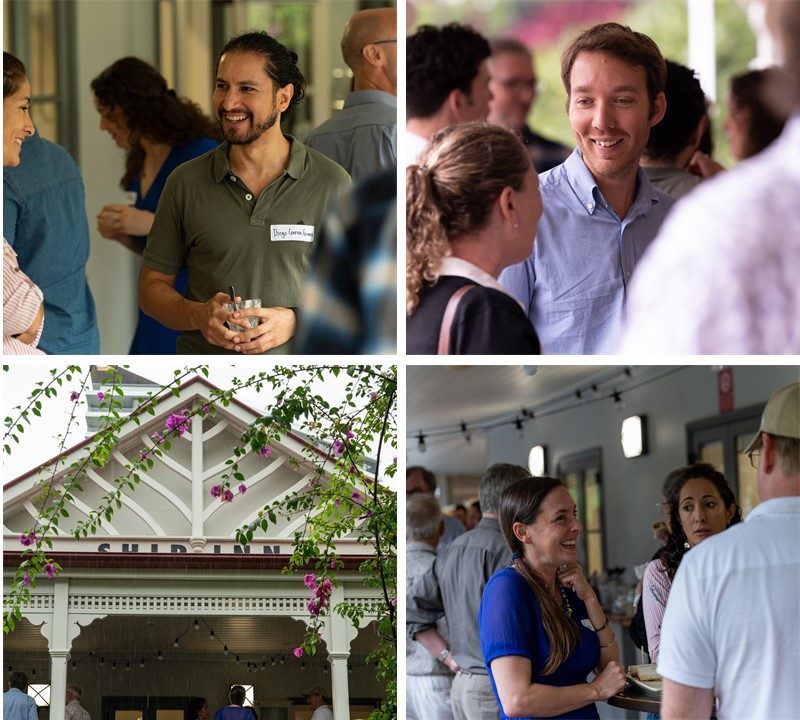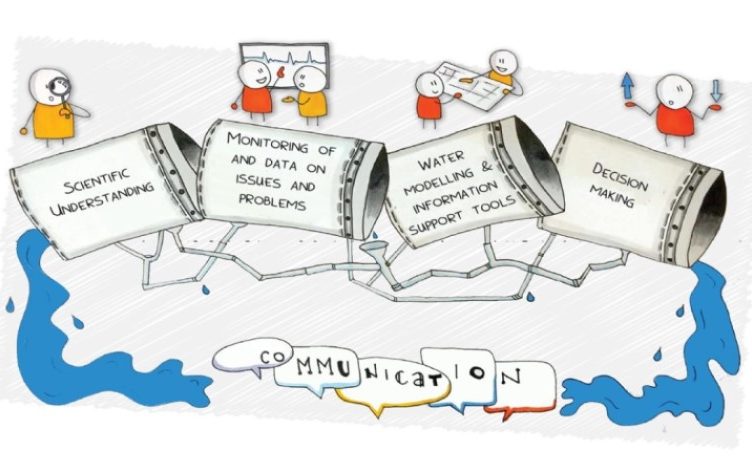
05/12/2024
Event Summary: Overview of water quality modelling projects from the Queensland Water Modelling Network with Callym Dunleavy
Read more
Landscape rehabilitation and resilience is a key strategic focus for the Queensland Water Modelling Network and an area set to benefit from more direct links with water modelling, to help guide the design of targeted interventions, and to assess their effectiveness. This is a vision that our Community of Practice events have discussed previously, as we looked at landscape impacts on water quality, flooding, water security along with various rural, regional and urban management needs.
On Monday 28 March 2022, we were joined by a group of eager practitioners from across local and state government, utilities, NRM groups, universities, and consulting, ready to explore how an integrated approach to landscape management and rehabilitation might look using a whole-of-system catchment management framework. This framework is a synthesis of knowledge and practice steps that provides a sequenced interconnected approach, that is beneficial for engaging stakeholders, building a catchment or restoration plan and underpinning any required investment. It was developed by Mike Ronan, and his team at The Queensland Wetlands Program at the Department of Environment and Science.
The day began at the Ship Inn with an Acknowledgement of Country by Piet Filet before a quick summary of the activities ahead. To set the scene and get a background on the landscape interests and experiences at the workshop, participants listed which landscapes they currently work on and what are the values that they seek to protect or enhance in their various landscape management projects. See table, below.
The results from this initial scan illustrate the depth of knowledge and interest among fellow professionals working in this theme and so it was a good confirmation for further discussion.
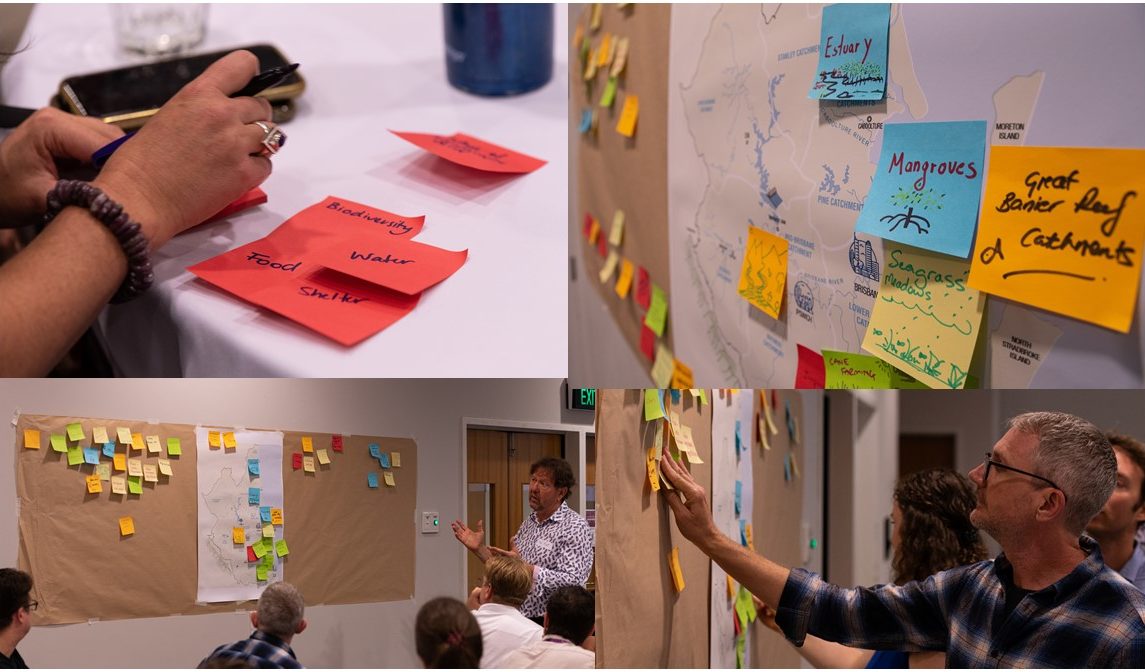
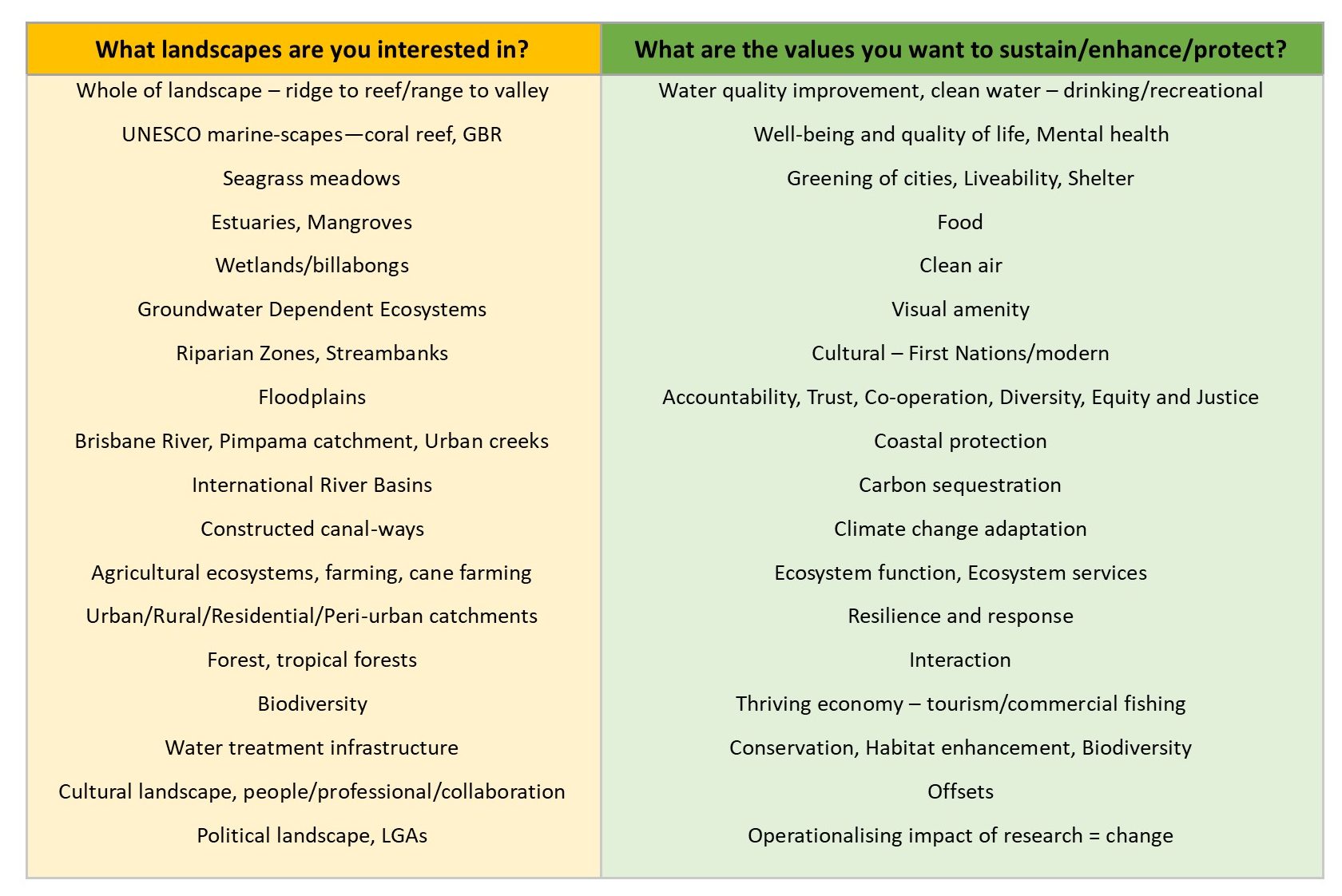
An introduction and “virtual – web-based tour” of the framework was provide by Mike as he walked the group through a pilot version of this Whole-of-System Catchment Management Framework. The “soon to come final version” of this approach entails a number of main elements and details sub sections providing both expanded definition and clarity of each element to help guide a user through the utility and application of the approach. This step-by-step framework provides a comprehensive approach to rehabilitation from initial trigger to eventual monitoring and evaluation of implemented strategies. It has been designed as a navigation tool for technical specialist and decision maker and the many collaborators who may be involved along the way (see image below)
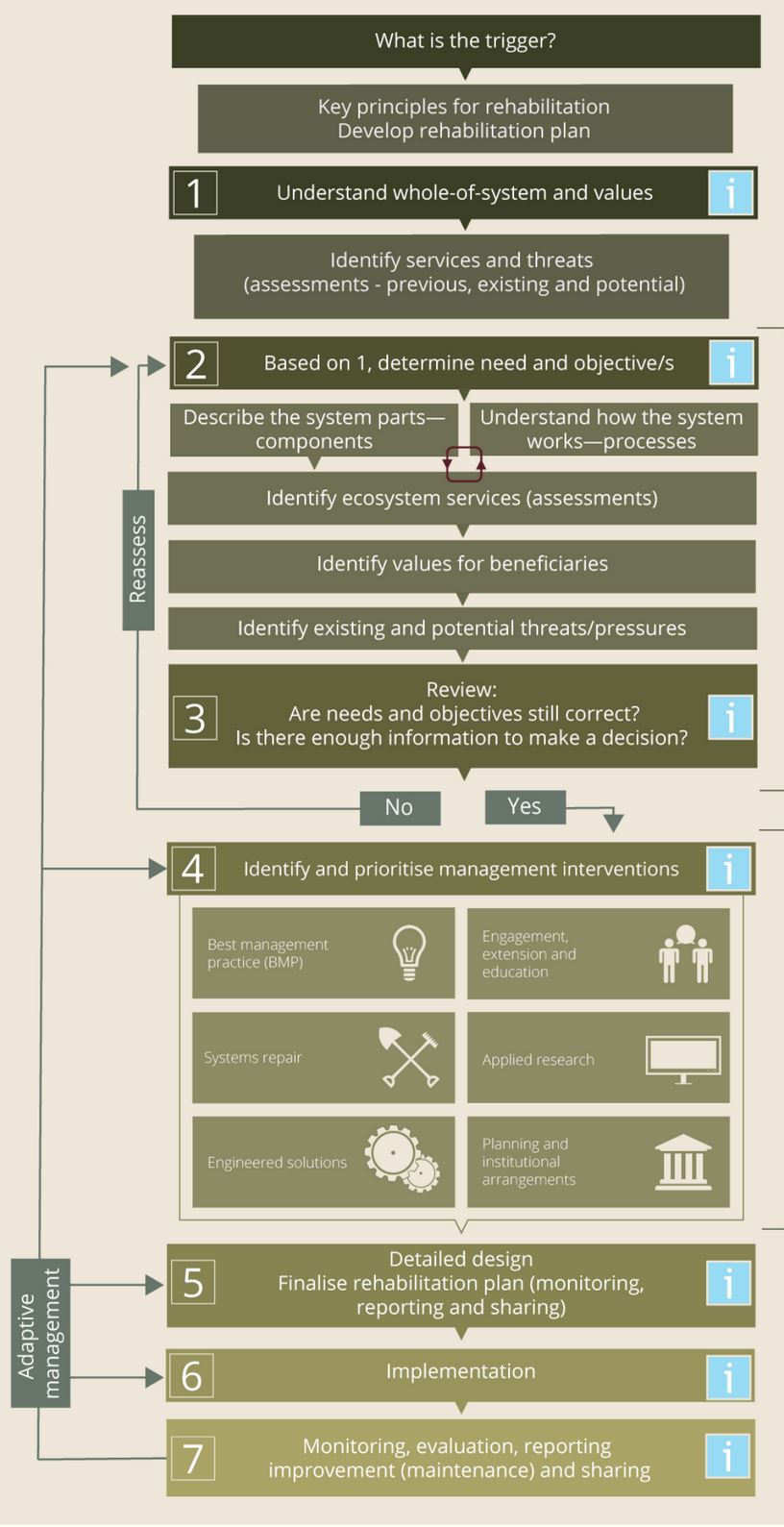
Whole-of-System Catchment Management Framework – “Draft for Consultation – Not Government Policy”
Some highlights included:
To better appreciate the benefits and utility of this approach, five small groups at the workshop took to task with an outline a landscape restoration process. In a broad ranging discussion each group looked to see how the integration of their own projects might work, what were any gaps, and suggest any case studies that could exemplify the application of the framework.

To round off the various small group discussions, Fernanda Adame – Field Ecologist and Steve Skull – Landscape Plan/Implementation Program Designer, both described how this integrated whole of system approach supports them in their various research and projects – plus engagement with the various stakeholder and beneficiaries involved in each particular landscape management/restoration project. Along with Mike Ronan, this final concluding discussion saw a number of Key Messages considered, including:
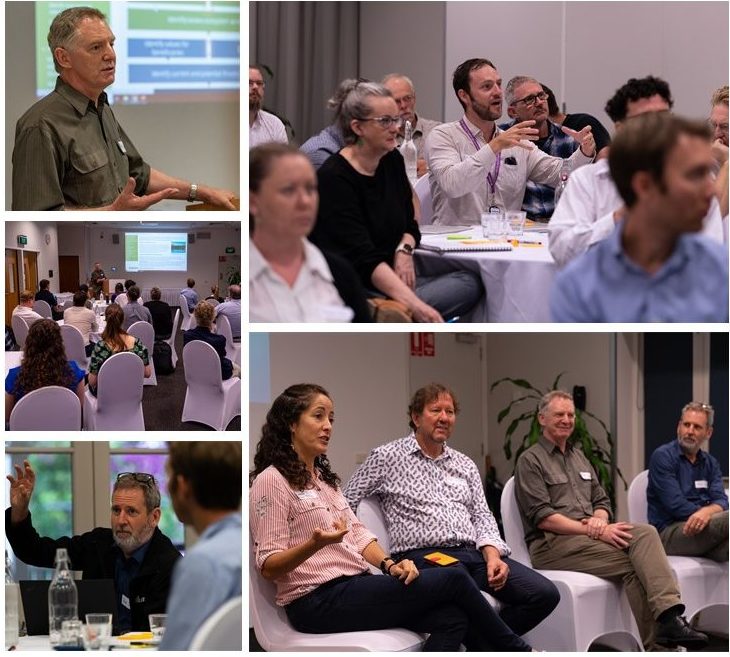
Some next steps coming from the workshop:
